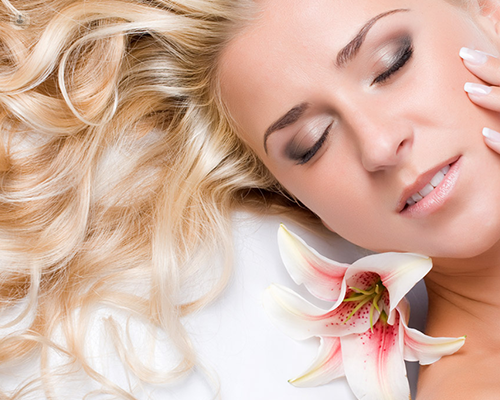
Rejuvenating the skin with laser treatment
Laser treatment is the fastest, most effective and safest way to get a fresh, uniform skin. There is a quick and effective solution to pigmented spots, spider veins, acne scars, open pores and other unsightly skin lesions: the laser. But not every laser is suitable for all conditions. In this article, we discover which laser is the most appropriate for each case.

Liver spots
Solar lentigines, also known as age or liver spots, are spots that appear in areas exposed to the sun and present a round shape with irregular margins. Their origin is linked to ageing or over exposure to the sun. Many doctors use the Q-switched alexandrite laser to eliminate age spots in a single session. The laser light destroys cells with an excess of pigmentation without damaging the surrounding tissue, and the spots are completely eliminated. After the laser session, there will be a scab of the same size as the lesion. This disappears in about five to ten days.
Spider veins and varicose veins
These are dilatations of the small veins on the face or body (most commonly on the legs) that may give rise to complications such as ulcers, clots and bleeding. They are treated with the Nd-YAG vascular laser, in 1-4 sessions, depending on the size, depth of injury and skin type. Cherry angiomas: These are red dots, which appear mainly on the neckline and back. They are capillary angiomas and, in most cases, hereditary. These lesions, once they have appeared, if not treated, not only will not disappear but may grow and eventually reproduce. To remove cherry angiomas, doctors use an Nd-YAG vascular laser, which eliminates them in a single session. After the treatment, the spot remains of a darker colour and is reabsorbed by the body without forming a scar.
Acne and surgical scars
To treat scars, whether they are caused by acne, surgery or trauma, we use a non-ablative fractional laser and in about 5 sessions (1 session every 30 days) the patient can see a very remarkable improvement (a reduction of up to 80%). This is achieved thanks to the remodelling of old collagen (poorly formed in the case of keloid scars) and by inducing the formation of new collagen of higher quality.
Stretch marks
Stretch marks are whitish or reddish lines in the skin that are mainly located on the abdomen, thighs and chest. These are "scars" on the skin with a "tearing" appearance. On a histological level, there is an atrophy of the epidermis with dermal fibrosis and rupture of elastic fibres and collagen. The main causes of stretch marks are pregnancy, puberty and rapid weight gain. They may also be associated with prolonged use of some drugs such as corticosteroids. The appearance of stretch marks can be reduced with topical creams. Creams that usually contain elastin, extracts of placenta, amniotic fluid, extracts of plants like the equisetum (horsetail), algae, etc. are used to maintain and increase the elasticity of the skin. They are applied from the beginning of the process and the massages stimulate the cutaneous circulation.
Laser treatment is more effective when the stretch marks are in the vascularised phase (when they are red) rather than in the scar phase (when they are white). Experience shows laser treatment is already achieving very satisfactory results that meet the expectations of patients with both red and white stretch marks. A non-ablative fractional laser is used, and in about five sessions (one session every 30 days) the patient will see a very remarkable improvement (a reduction of up to 80%) in the size of the stretch marks (shorter and narrower). The skin tone is also improved, with the texture becoming more similar to normal skin (the red colour disappears and/or the atrophy in the white stretch marks is improved). The stretch marks look much more like normal skin and are less noticeable.
The non-ablative fractional laser is also an effective treatment for cases of mild to moderate ageing and the fractional CO2 laser can be used in cases of severe ageing. This works by activating the skin cells in patients’ bodies to encourage them to make their own collagen and their own elastic fibres, so the outer layer of their skin renews itself. It is considered "rejuvenating from the inside" in a natural way, which is the current trend.

